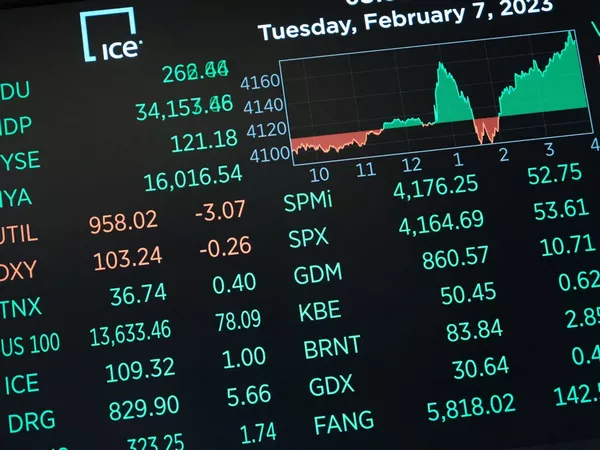In a reflection of the ongoing impact of positive corporate earnings and relatively stable Treasury yields, global stock markets demonstrated resilience on Tuesday. This trend, however, was counterbalanced by continued concerns surrounding the ongoing Middle East conflict and mixed economic indicators, setting the stage for forthcoming interest rate decisions.
As concerns mounted regarding a potential escalation of the Israel-Hamas conflict, oil prices faced further declines due to weakened demand, overshadowing geopolitical risks in the oil-exporting region.
Meanwhile, the U.S. dollar showed strength, and Bitcoin experienced a remarkable 7% surge, building upon its largest one-day rally in a year.
On Wall Street, robust outlooks from companies such as Verizon (NYSE: VZ) and Coca-Cola (NYSE: KO) instilled optimism in corporate America’s capacity to navigate a slowing economy and rising inflation. The Dow Jones Industrial Average climbed 0.6%, the S&P 500 advanced by 0.7%, and the Nasdaq Composite registered a 0.9% gain.
Economic indicators for the month of October painted a mixed picture. Business activity in the U.S. surpassed expectations, whereas output in the eurozone took an unexpected downturn, potentially signaling a recession in certain European countries, particularly Germany.
Sameer Samana, Senior Global Market Strategist at Wells Fargo Investment Institute, noted that while geopolitics and politics continue to influence market sentiments, the future remains uncertain. He advised a defensive approach within both equities and fixed income, awaiting a more opportune moment to embrace risk.
The MSCI All-World index exhibited a 0.5% gain, and an index of Asia-Pacific shares outside Japan edged above a one-year low.
In Europe, the STOXX 600 rose by 0.44%. Declines in banking shares, such as Barclays, were offset by gains in luxury group LVMH and Swiss computer parts manufacturer Logitech (NASDAQ: LOGI).
Although investors do not anticipate the European Central Bank to increase interest rates in its upcoming meeting, they remain prepared for sustained high borrowing costs, with inflationary concerns arising from the sharp ascent in oil prices.
Global bond yields have recently surged, primarily due to the prevailing belief that central banks will be unable to cut interest rates until well into 2024. The 10-year Treasury note yielded 4.819%, nearly unchanged on the day, after briefly reaching 5% on Monday.
Larry Fink, CEO of BlackRock (NYSE: BLK), expressed his belief that U.S. rates would remain elevated for an extended period, driven by significant fiscal stimulus in an already robust economy and strong wage growth. He emphasized the necessity for higher interest rates to mitigate potential economic risks.
Investors are now divided between scrutinizing the earnings reports of high-profile companies, including Microsoft (NASDAQ: MSFT), Meta Platforms (NASDAQ: META), and Amazon (NASDAQ: AMZN), and closely monitoring a barrage of economic data leading up to the Federal Reserve’s meeting from October 31 to November 1.
Key data, such as third-quarter gross domestic product figures and the Personal Consumption Expenditures (PCE) report – the central bank’s preferred inflation indicator – are due to be released, shaping expectations for U.S. interest rates in the medium term.
In the currency market, the U.S. dollar experienced a 0.6% increase against a basket of currencies, reversing the previous day’s 0.5% decline. The yen remained steady against the dollar, hovering close to the 150-per-dollar mark, a level believed to trigger potential intervention by Japanese authorities.
Cryptocurrencies exhibited notable activity, with Bitcoin reaching 18-month highs. Speculation regarding the possibility of an exchange-traded fund fueled enthusiasm and prompted short-sellers to exit their positions. The world’s largest cryptocurrency slightly eased to $33,712, marking a 7% increase for the day.
Oil prices continued to slide for a third consecutive session in response to bearish economic data from Germany, the broader eurozone, and Britain, which painted a concerning picture for oil demand. U.S. crude and Brent both settled down by approximately 2% per barrel on the day.
Gold prices remained relatively stable, with spot gold trading at $1,972 an ounce.


